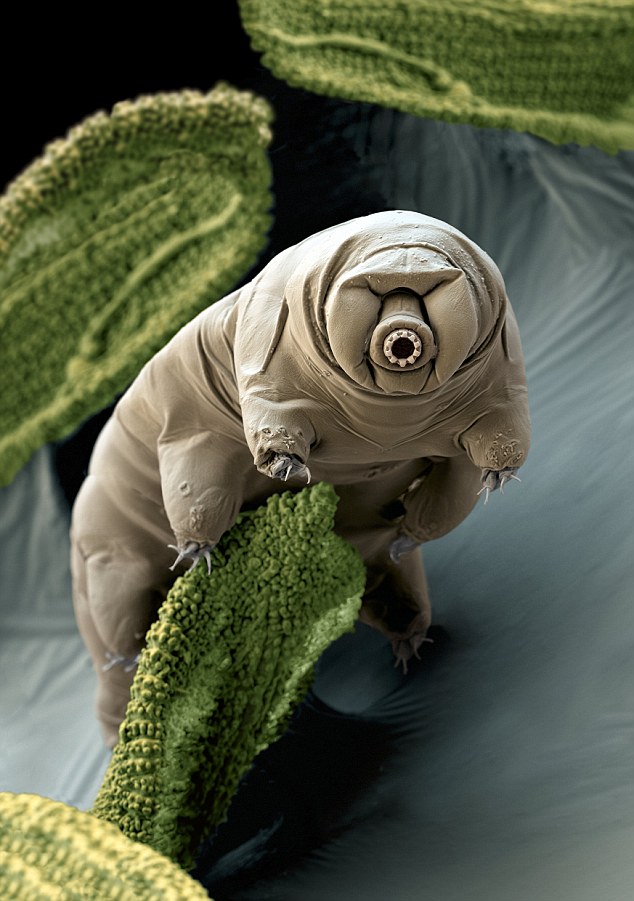Republished by Blog Post Promoter
Imagine if these creatures were 6 feet tall….
Tardigrade, kleiner Wasserbär, meaning ‘little water bear’ in German. The name Tardigrada means “slow walker” and was given by Lazzaro Spallanzani in 1777. The name water bear comes from the way they walk, reminiscent of a bear’s gait. The biggest adults may reach a body length of 1.5 millimetres (0.059 in), the smallest below 0.1 mm. Freshly hatched tardigrades may be smaller than 0.05 mm.
About 1,150 species of tardigrades have been described.Tardigrades occur throughout the world, from the Himalayas(above 6,000 metres (20,000 ft)), to the deep sea (below 4,000 metres (13,000 ft)) and from the polar regions to the equator.
The most convenient place to find tardigrades is on lichens and mosses. Other environments are dunes, beaches, soil, and marine or freshwater sediments, where they may occur quite frequently (up to 25,000 animals per liter). Tardigrades often can be found by soaking a piece of moss in spring water.
Tardigrades are able to survive in extreme environments that would kill almost any other animal. Some can survive temperatures of close to absolute zero, or 0 Kelvin (−273 °C (−459 °F)), temperatures as high as 151 °C (304 °F), 1,000 times more radiation than other animals, and almost a decade without water. Since 2007, tardigrades have also returned alive from studies in which they have been exposed to the vacuum of space for a few days in low Earth orbit. Tardigrades are the first known animal to survive in space.
Tardigrades (commonly known as waterbears or moss piglets) are small, water-dwelling, segmented animals with eight legs. It is an ancient group, with fossils dating from 530 million years ago, in the Cambrian period. They are notable for being one of the most complex of all known polyextremophiles. (An extremophile is an organism that can thrive in a physically or geochemically extreme condition that would be detrimental to most life on Earth.)
Tardigrades can withstand temperatures from just above absolute zero to well above the boiling point of water. They can survive pressures greater than any found in the deepest ocean trenches and have lived through the vacuum of outer space. They can survive solar radiation, gamma radiation, ionic radiation— at doses hundreds of times higher than would kill a person. They can go without food or water for nearly 10 years, drying out to the point where they are 3% or less water, only to rehydrate, forage, and reproduce.
Usually, Tardigrades are 1 millimetre (0.039 in) long when they are fully grown. They are short and plump with 4 pairs of legs, each with 4-8 claws also known as “disks.” The animals are prevalent in moss and lichen and, when collected, may be viewed under a very low-power microscope, making them accessible to the student or amateur scientist as well as the professional.



